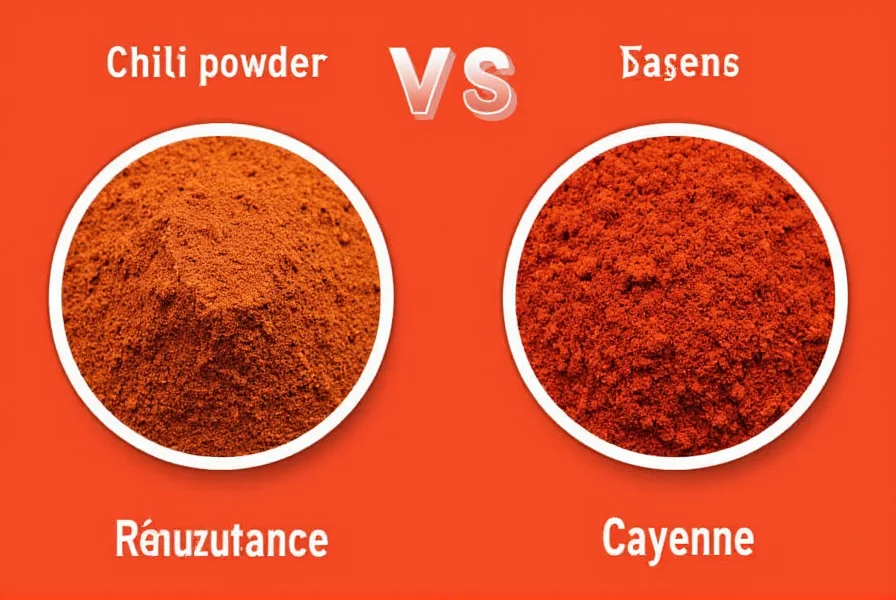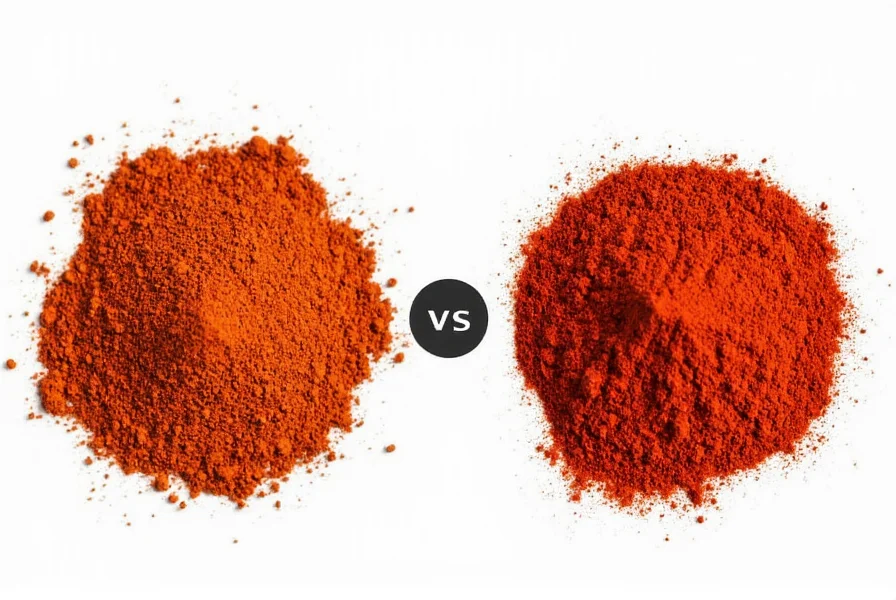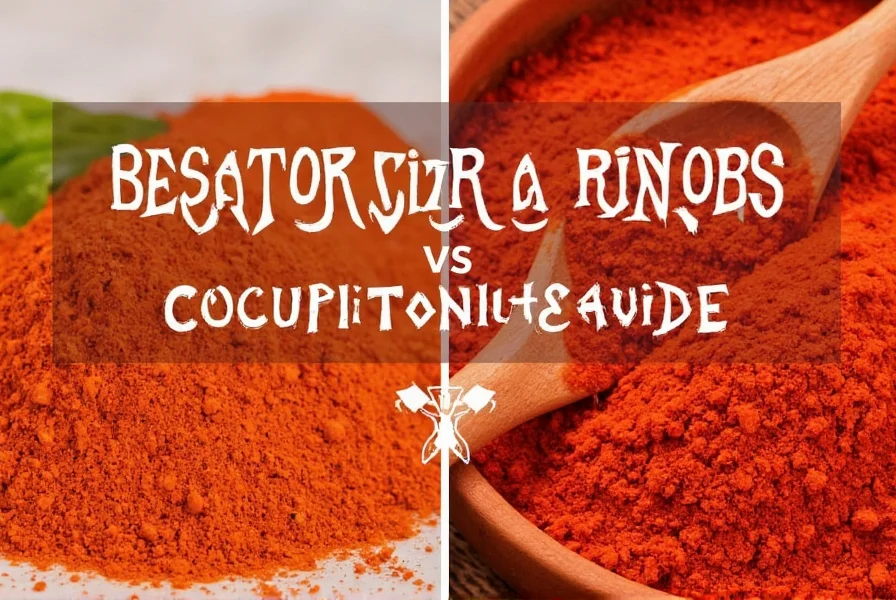Yes, chili powder can be substituted for cayenne pepper in most recipes, but not in equal amounts. Cayenne pepper is significantly hotter (30,000-50,000 Scoville units) than standard chili powder (1,000-2,500 Scoville units). As a general rule, use 3 teaspoons of chili powder to replace 1 teaspoon of cayenne pepper for similar heat levels, though flavor profiles will differ.
When you're in the middle of cooking and realize your recipe calls for cayenne pepper but you only have chili powder (or vice versa), knowing how to properly substitute these spices becomes crucial. Many home cooks mistakenly treat these ingredients as interchangeable without understanding their fundamental differences in heat level and flavor composition. Getting this substitution wrong can result in a dish that's either disappointingly bland or uncomfortably spicy.
Understanding the Fundamental Differences
Before making substitutions, it's essential to understand what each spice actually is:
Cayenne pepper is a single-ingredient spice made from ground dried cayenne peppers. It delivers consistent, straightforward heat with minimal additional flavor complexity. Pure cayenne typically measures between 30,000-50,000 Scoville Heat Units (SHU).
Chili powder, despite its name, is usually a spice blend containing ground chili peppers plus other ingredients like cumin, garlic powder, oregano, and paprika. Standard American chili powder measures only 1,000-2,500 SHU, making it significantly milder than cayenne. The exact composition varies by brand, which affects both heat level and flavor profile.
| Spice | Heat Level (SHU) | Primary Flavor Notes | Common Ingredients |
|---|---|---|---|
| Cayenne Pepper | 30,000-50,000 | Sharp, clean heat | 100% ground cayenne peppers |
| Standard Chili Powder | 1,000-2,500 | Earthy, slightly sweet, complex | Chili peppers, cumin, garlic, oregano, paprika |
Practical Substitution Guidelines
When substituting between these spices, consider both heat level and flavor implications:
Using Chili Powder Instead of Cayenne Pepper
Since chili powder is much milder, you'll need to use more to achieve similar heat:
- For mild heat: Use 1½ teaspoons chili powder per ¼ teaspoon cayenne
- For medium heat: Use 3 teaspoons (1 tablespoon) chili powder per ¼ teaspoon cayenne
- For recipes requiring significant heat: Consider adding a pinch of cayenne to your chili powder substitution
Be aware that chili powder will introduce additional flavors (cumin, garlic, etc.) that may alter your dish's intended flavor profile. This substitution works best in complex dishes like chili, stews, or tomato-based sauces where additional spices complement rather than compete with the recipe.
Using Cayenne Pepper Instead of Chili Powder
When substituting cayenne for chili powder, proceed with extreme caution:
- Start with ⅛ teaspoon cayenne for every 1 tablespoon chili powder called for
- Add gradually while tasting, as it's easy to over-spice
- Compensate for missing flavors by adding ¼ teaspoon cumin and a pinch of garlic powder per tablespoon of chili powder replaced
This substitution works best in recipes where heat is the primary goal rather than complex flavor, such as hot sauces, certain marinades, or dishes where additional spices can be incorporated.
Recipe-Specific Substitution Advice
The success of your substitution depends heavily on the specific dish you're preparing:
Best for Chili Powder Substitution (for cayenne)
- Chili con carne
- Tomato-based pasta sauces
- Cornbread and savory baked goods
- Meat rubs for slow cooking
Best for Cayenne Substitution (for chili powder)
- Hot sauces and wing sauces
- Deviled eggs
- Certain seafood dishes
- Spicy aiolis and dipping sauces
Dishes Where Substitution Is Problematic
- Taco seasoning (chili powder's complex flavor is essential)
- Enchilada sauce (requires specific chili powder blend)
- Traditional Mexican mole (authentic flavor depends on specific chili varieties)

Alternative Substitutes When Neither Is Available
If you don't have either spice, consider these alternatives:
- Red pepper flakes: Use ½ teaspoon flakes per ¼ teaspoon cayenne (adjust for heat)
- Paprika + cayenne: For chili powder substitute, mix 2 tsp paprika + ¼ tsp cayenne + ¼ tsp cumin
- Hot sauce: Add ½-1 teaspoon per ¼ teaspoon cayenne (adjust liquid content)
- Gochugaru (Korean chili flakes): Mild variety works as chili powder substitute; hot variety as cayenne substitute
Pro Tips for Successful Substitutions
Professional chefs recommend these techniques when substituting between chili powder and cayenne pepper:
- Taste as you go: Always add gradually and taste between additions, especially when using cayenne
- Consider timing: Add cayenne later in cooking to preserve heat; chili powder benefits from longer cooking to develop flavors
- Balance with acid: If you over-spice, add lime juice or vinegar to counteract excessive heat
- Make your own blend: For precise control, create custom chili powder by mixing 2 tbsp paprika, 1 tsp cumin, ½ tsp garlic powder, and ¼-½ tsp cayenne

Storage and Freshness Considerations
Spice freshness dramatically affects substitution success. Ground spices lose potency over time:
- Replace chili powder and cayenne every 6-12 months for optimal flavor and heat
- Store in airtight containers away from light and heat
- Fresh spices require less quantity for the same impact
- Older spices may need 25-50% more for equivalent heat/flavor
When substituting, consider the age of your spices. Older chili powder might actually approach cayenne's heat level as volatile compounds degrade unevenly, while fresh chili powder will be significantly milder.
Final Thoughts on Spice Substitutions
Understanding whether chili powder can be substituted for cayenne pepper requires recognizing that successful cooking substitutions aren't just about heat—they're about balancing flavor profiles and understanding how each ingredient contributes to the final dish. While the basic substitution ratio provides a starting point (3:1 for chili powder to cayenne), the best results come from considering your specific recipe, personal heat tolerance, and the other flavors in your dish.
Mastering these substitutions gives you greater flexibility in the kitchen and helps prevent recipe disasters when you're missing a specific ingredient. Remember that cooking is both science and art—use the guidelines as a foundation, but trust your palate to make the final adjustments for a perfectly balanced dish.
Can I use chili powder instead of cayenne in my chili recipe?
Yes, but use 3 times the amount of chili powder compared to cayenne. For every ¼ teaspoon of cayenne, use ¾ teaspoon of chili powder. Be aware that chili powder will add additional flavors (cumin, garlic) that may alter your chili's profile, which is usually acceptable in chili recipes.
What happens if I use too much cayenne instead of chili powder?
Using too much cayenne can make your dish uncomfortably spicy. If this happens, add dairy (yogurt, sour cream), acid (lime juice, vinegar), or sweetness (honey, sugar) to counteract the heat. For future reference, remember that ⅛ teaspoon cayenne roughly equals 1 tablespoon chili powder.
Is cayenne pepper the same as red pepper flakes?
No, though both come from similar peppers. Cayenne pepper is a fine powder with consistent heat, while red pepper flakes contain seeds and membrane fragments that create variable heat levels. Substitute ½ teaspoon red pepper flakes for ¼ teaspoon cayenne, but be aware flakes add texture.
Why does my chili powder substitution not taste right?
Chili powder is a blend that varies by brand, while cayenne is pure pepper. Your substitution might taste different because chili powder adds additional flavors like cumin and garlic. For closer results, try making your own chili powder blend with paprika, cumin, garlic powder, and a small amount of cayenne.
Can I make my own cayenne pepper substitute?
Yes, create a cayenne substitute by mixing 2 parts paprika with 1 part red pepper flakes. For more authentic heat, add a tiny pinch of cayenne to this mixture. This gives you control over the heat level while approximating cayenne's flavor profile better than chili powder alone.











 浙公网安备
33010002000092号
浙公网安备
33010002000092号 浙B2-20120091-4
浙B2-20120091-4